Products
-
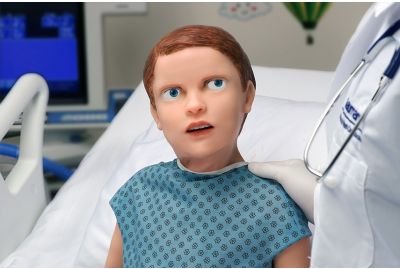 Pediatric HAL® S2225 - Wireless and Tetherless Pediatric Patient SimulatorS2225.PKLearn MorePediatric HAL® is the world's most advanced pediatric patient simulator and the first capable of simulating lifelike emotions through dynamic facial expressions, movement, and speech. HAL is designed to help providers of all levels develop the specialized skills needed to effectively communicate, diagnose, and treat young patients in nearly all clinical areas.
Pediatric HAL® S2225 - Wireless and Tetherless Pediatric Patient SimulatorS2225.PKLearn MorePediatric HAL® is the world's most advanced pediatric patient simulator and the first capable of simulating lifelike emotions through dynamic facial expressions, movement, and speech. HAL is designed to help providers of all levels develop the specialized skills needed to effectively communicate, diagnose, and treat young patients in nearly all clinical areas. -
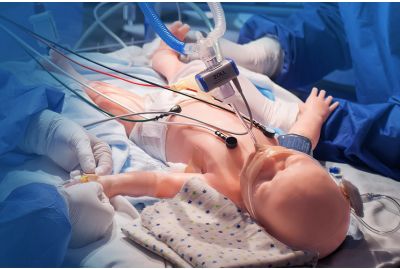 Super TORY® S2220 - Advanced Newborn Patient SimulatorS2220.PKLearn More
Super TORY® S2220 - Advanced Newborn Patient SimulatorS2220.PKLearn MoreSuper TORY® is the first newborn simulator developed to meet the challenges of neonatal care specialist training in real environments. Active movement, true ventilator support, real patient monitoring, and all-day battery life. These are just a few of the revolutionary new capabilities which allow Super TORY to simulate complex pathologies and respond to interventions with unparalleled realism.
-
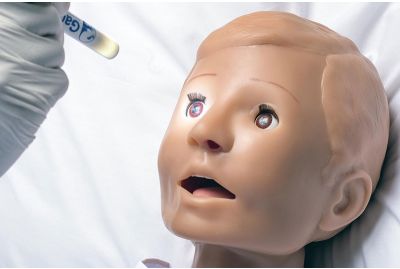 Pediatric HAL® S3005 - Wireless and Tetherless, Five-Year-Old Patient SimulatorS3005.PKLearn MoreFrom nursing to emergency care, the Pediatric HAL® S3005 Five-Year-Old Patient Simulator allows you to train teamwork and patient care skills through hands-on exercises. Pediatric HAL® is wireless and tetherless and remains fully functional while being moved from place to place.
Pediatric HAL® S3005 - Wireless and Tetherless, Five-Year-Old Patient SimulatorS3005.PKLearn MoreFrom nursing to emergency care, the Pediatric HAL® S3005 Five-Year-Old Patient Simulator allows you to train teamwork and patient care skills through hands-on exercises. Pediatric HAL® is wireless and tetherless and remains fully functional while being moved from place to place. -
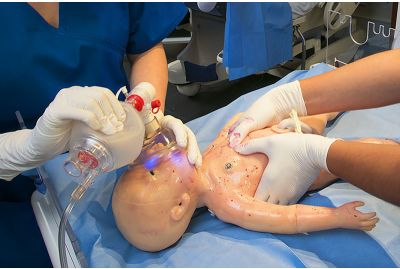 Newborn TORY® S2210 - Wireless and Tetherless Full-term Neonatal Care Patient SimulatorS2210.PKLearn More
Newborn TORY® S2210 - Wireless and Tetherless Full-term Neonatal Care Patient SimulatorS2210.PKLearn MoreNewborn TORY® offers a new level of fidelity with true-to-life physical and physiological attributes essential for effective neonatal care simulation training. With a truly wireless and tetherless design educators can freely simulate clinical cases in any setting, even in transit. Whether in a simulation center or in-situ, Tory brings neonatal simulation closer to real life than ever before.
-
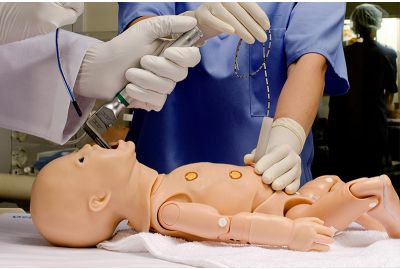 Newborn HAL® S3010 - Wireless and Tetherless, Neonate at 40-Weeks Gestational AgeS3010.PKLearn More
Newborn HAL® S3010 - Wireless and Tetherless, Neonate at 40-Weeks Gestational AgeS3010.PKLearn MoreNewborn HAL's® true-to-life physical and physiological features, wireless mobility, and ease-of-use allow you to simulate realistic clinical cases. Whether training occurs in a simulation center, in situ, or in transit, participants of any level can practice the skills needed to provide safe and effective care to neonatal patients.
-
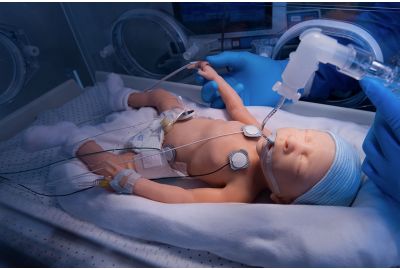 Premie HAL® S2209 30-Week Premature Infant Patient SimulatorS2209.PKLearn MoreLifelike, Wireless and Tetherless Preterm Patient Simulator.The Premie HAL® S2209 is a lifelike, wireless and tetherless 30-week preterm patient simulator designed to facilitate the training of residents and health care professionals in the areas of preterm airway management, resuscitation, stabilization, transport, and intensive care.
Premie HAL® S2209 30-Week Premature Infant Patient SimulatorS2209.PKLearn MoreLifelike, Wireless and Tetherless Preterm Patient Simulator.The Premie HAL® S2209 is a lifelike, wireless and tetherless 30-week preterm patient simulator designed to facilitate the training of residents and health care professionals in the areas of preterm airway management, resuscitation, stabilization, transport, and intensive care. -
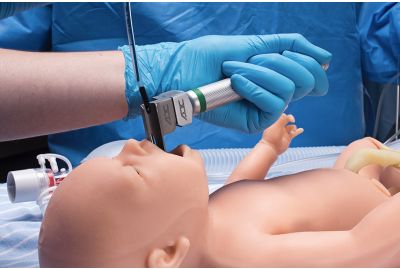 Newborn PEDI® S109 - Newborn Skills TrainerS109.PKLearn MoreThe Newborn PEDI® S109 is a full-body newborn patient simulator designed to help participants train and develop neonatal procedural skills. The S109's anatomically accurate anatomy allows participants to work hands-on and hone intubation, ventilation, compressions, IV cannulation, and umbilical catheterization skills.
Newborn PEDI® S109 - Newborn Skills TrainerS109.PKLearn MoreThe Newborn PEDI® S109 is a full-body newborn patient simulator designed to help participants train and develop neonatal procedural skills. The S109's anatomically accurate anatomy allows participants to work hands-on and hone intubation, ventilation, compressions, IV cannulation, and umbilical catheterization skills. -
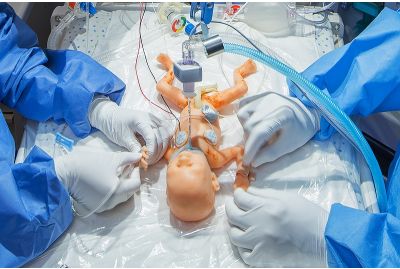 Premie HAL® S108.100 - 24-Week Preterm Newborn Skills TrainerS108.100.PKLearn MoreThe Premie HAL® S108.100 is a lifelike, 24-week preterm patient simulator designed to facilitate the training of healthcare professionals in the areas of airway management, respiratory support, and resuscitation.
Premie HAL® S108.100 - 24-Week Preterm Newborn Skills TrainerS108.100.PKLearn MoreThe Premie HAL® S108.100 is a lifelike, 24-week preterm patient simulator designed to facilitate the training of healthcare professionals in the areas of airway management, respiratory support, and resuscitation. -
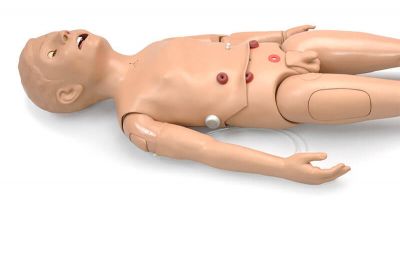 Five-Year-Old Multipurpose Patient Simulator (S157)S157.PKLearn MoreThe Five-Year-Old Multipurpose Patient Simulator is designed to help participants practice and develop pediatric nursing care and resuscitation skills, including CPR, intubation, trach care, IV access, and more.
Five-Year-Old Multipurpose Patient Simulator (S157)S157.PKLearn MoreThe Five-Year-Old Multipurpose Patient Simulator is designed to help participants practice and develop pediatric nursing care and resuscitation skills, including CPR, intubation, trach care, IV access, and more. -
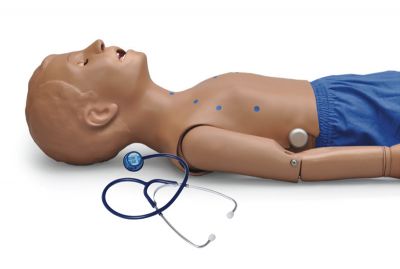 5-Year-Old Patient, Heart and Lung Sounds Skills Trainer (S314.200)S314.200.PKLearn MoreThe 5-Year-Old Patient Heart and Lung Sounds Skills Trainer is a new site-specific upgrade for your existing Gaumard® pediatric manikin. Teach site-specific heart and lung auscultation skills using seamless simulation technology. Simply press the bell against the skin and listen. Students use anatomic landmarks on the manikin to locate the site where a specific sound should be heard. If correct, they will hear the appropriate sound through the stethoscope and/or external speakers.
5-Year-Old Patient, Heart and Lung Sounds Skills Trainer (S314.200)S314.200.PKLearn MoreThe 5-Year-Old Patient Heart and Lung Sounds Skills Trainer is a new site-specific upgrade for your existing Gaumard® pediatric manikin. Teach site-specific heart and lung auscultation skills using seamless simulation technology. Simply press the bell against the skin and listen. Students use anatomic landmarks on the manikin to locate the site where a specific sound should be heard. If correct, they will hear the appropriate sound through the stethoscope and/or external speakers.
